
4 min read
Rest Assured: A Guide to Healthy, Sustainable Bed Linens
WLLW investigates four healthy and environmentally friendly bed linen options for a better night's sleep.

5 min read
WLLW investigates the benefits of four upholstery options for our health and their environmental impact.
In an era where environmental concerns and personal health are paramount, choosing upholstery materials for our homes transcends mere aesthetics.
The home furnishing industry has become reliant on quick, cheap, virgin materials such as polyester that take decades or longer to biodegrade, releasing microplastics into the environment during the process. What's more, the chemical processing of textiles, both synthetic and natural, can take a toll on our health.
A sustainable and healthy fabric minimizes environmental impact and promotes wellbeing throughout its lifecycle, which accounts for 6.7 percent of all global greenhouse gas emissions in the case of textiles. Every step in the manufacturing process matters, from regenerative farming practices to raw material production, use and eventual disposal.
Brands such as Rose Uniacke, de Le Cuona, Holland & Sherry and Rosemary Hallgarten work with natural fibers such as linen, wool, hemp and organic cotton offering healthy alternatives for our homes and a respite from the growing carbon footprint of synthetic textiles. Let’s take a balanced look at how they stack up.

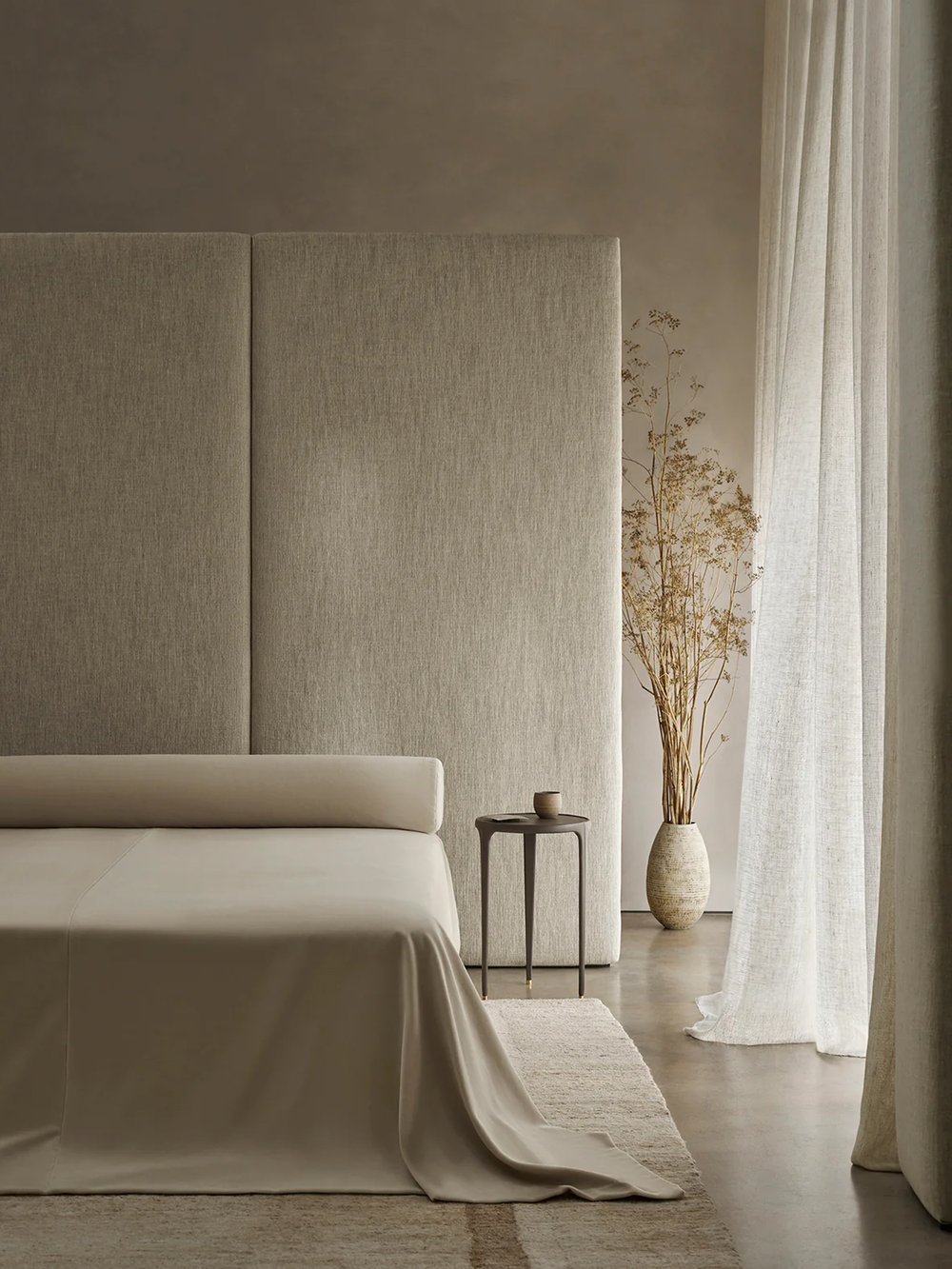
Linen is derived from the flax plant and is the oldest fiber to be used by humans, having been cultivated for over 10,000 years. The 100-day harvest process involves drying and breaking flax stalks to remove the woody core, leaving the fibers that will become linen behind.
Most fiber flax production is concentrated in Western Europe, where the region's mild Atlantic climate fosters optimal conditions for the flax plants to thrive and reach their desired height, which is crucial for yielding high-quality linen. France is the leading producer yet the bulk of this flax is exported to China for textile manufacturing.
Linen upholstery is naturally resistant to bacteria and dust mites. It’s renowned for its breathability and possesses natural hypoallergenic properties. The latter renders it an excellent choice for sensitive or allergy-prone skin.
Flax is renowned for its versatility, with every component of the plant historically utilized to produce various items, ensuring minimal waste. Flax cultivation doesn’t require irrigation, fertilizers, herbicides or pesticides, making it a relatively ‘clean’ crop. Flax harvests also capture 3.7 tons of CO2 per hectare annually, making them an excellent carbon sink.


Wool, comprised of keratin, is sourced from various breeds of sheep and other animals such as alpaca. A quarter of the world’s wool comes from Australia, the majority of which is from merino sheep.
Wool is naturally hypoallergenic and has the innate ability to regulate temperature in both warm and cool environments, making it suitable as a year-round textile. The lanolin in raw wool has antimicrobial properties, which facilitates 'self-cleaning' and enhances odor resistance.
One of wool’s greatest natural attributes is its biodegradability. Wool is also naturally water and flame-resistant, eliminating the need for protective chemical treatments.
Initiatives such as the Responsible Wool Standard (RWS) ensure that wool is sourced in a way that respects animal welfare and environmental preservation and requires all elements of the supply chain, from farmers to end sellers, to adhere to strict standards.
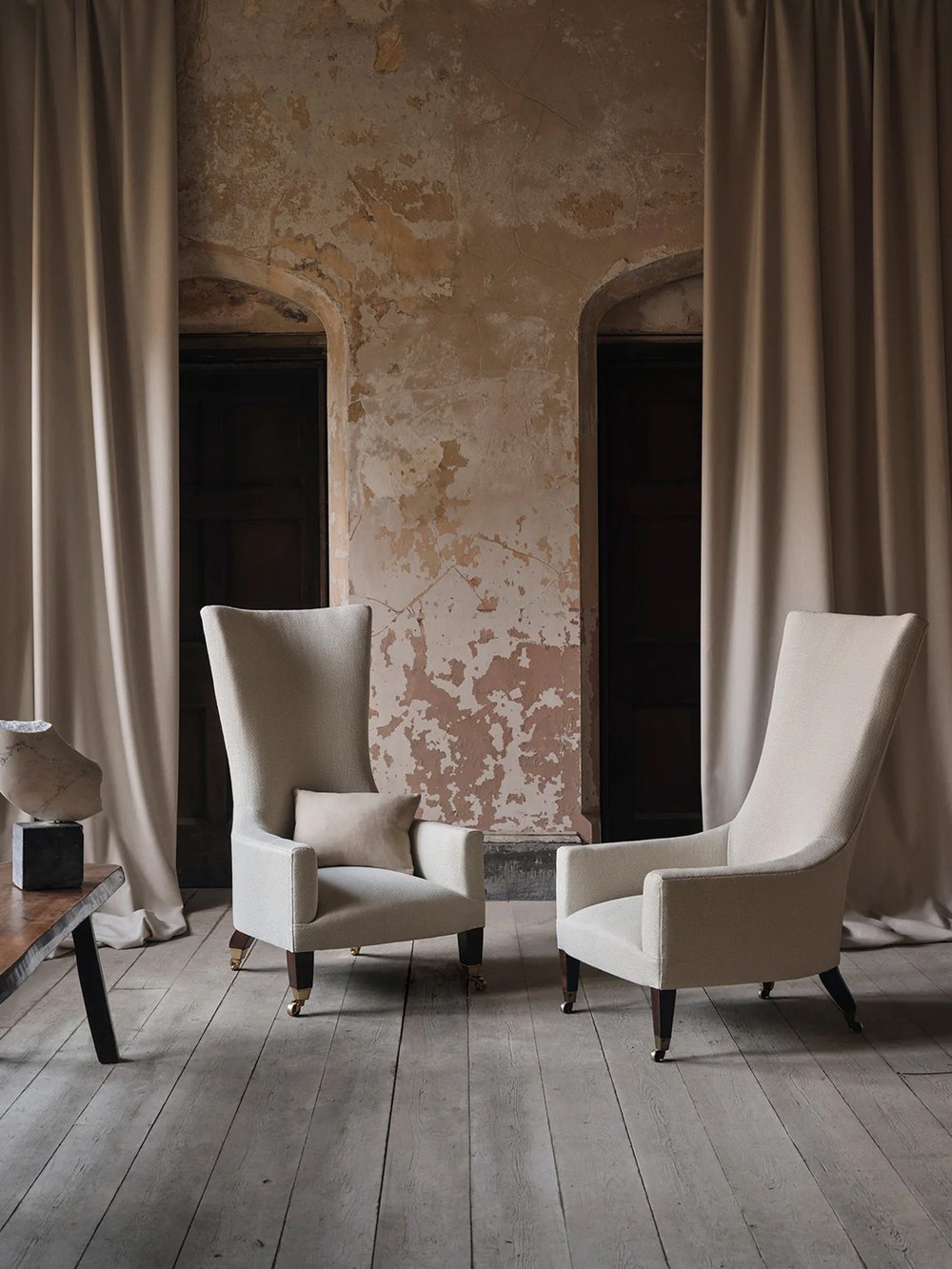
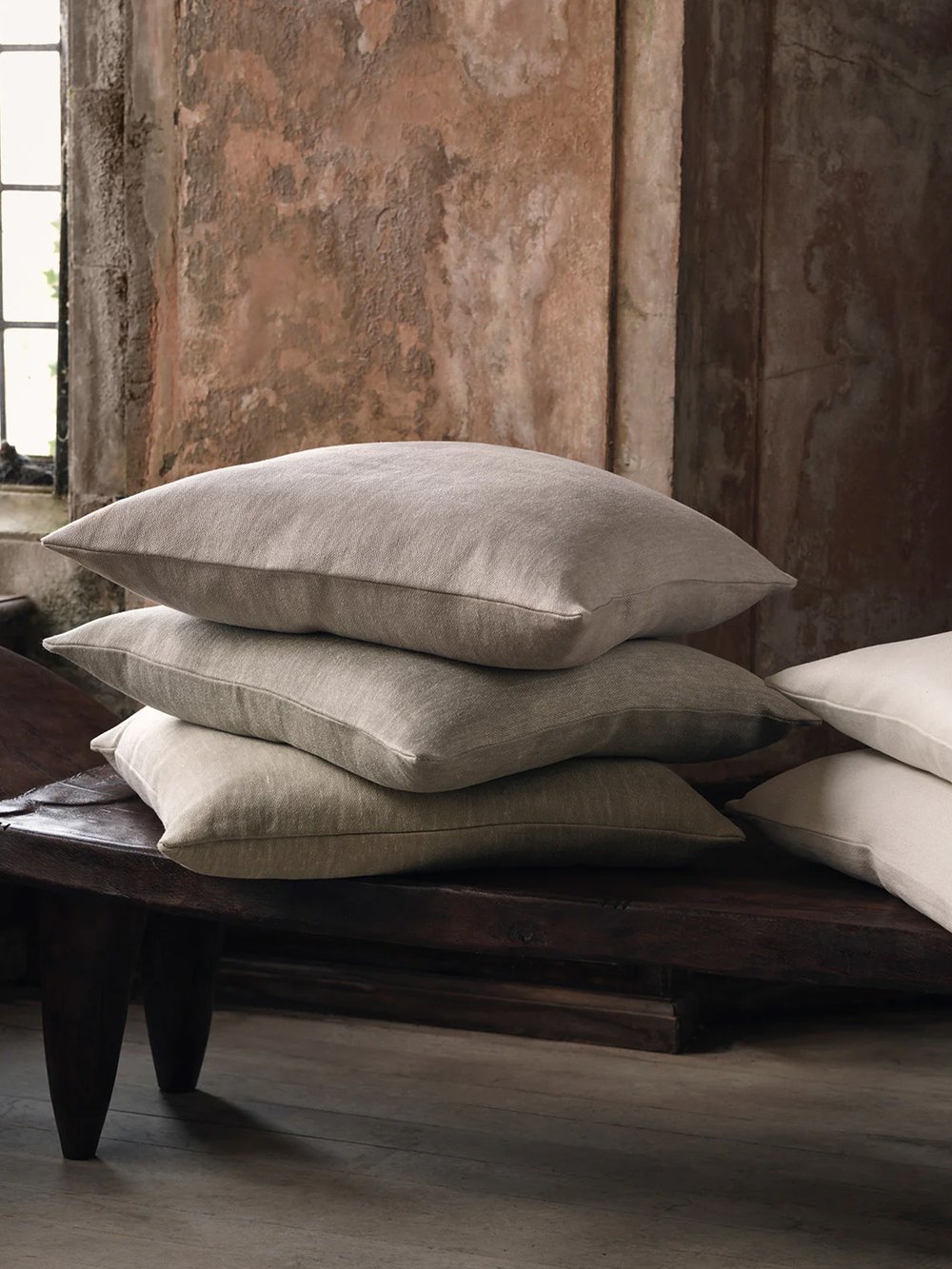
Hemp used for upholstery is sourced and produced from the plant stems, or basts, of the Cannabis sativa plant. The process of turning hemp into fabric is similar to that of producing linen from flax, with fibers separated from the dried stalks of the plant. Over half of the world’s hemp fibers come from China.
According to a study published in the National Library of Medicine, hemp fibers contain phenolic acids known for their antibacterial properties. Hemp textiles are also naturally hypoallergenic, making them less likely to cause skin irritation.
Hemp is often recognized as the eco fiber of choice due to its comparatively minimal footprint. Conventional hemp cultivation and processing can use significant amounts of fertilizer and heavy machinery, leading to considerable water consumption. Due to the bulkiness of the fiber, transportation to processing facilities can incur a larger carbon footprint. However, it still has a lower total ecological impact than that of cotton.
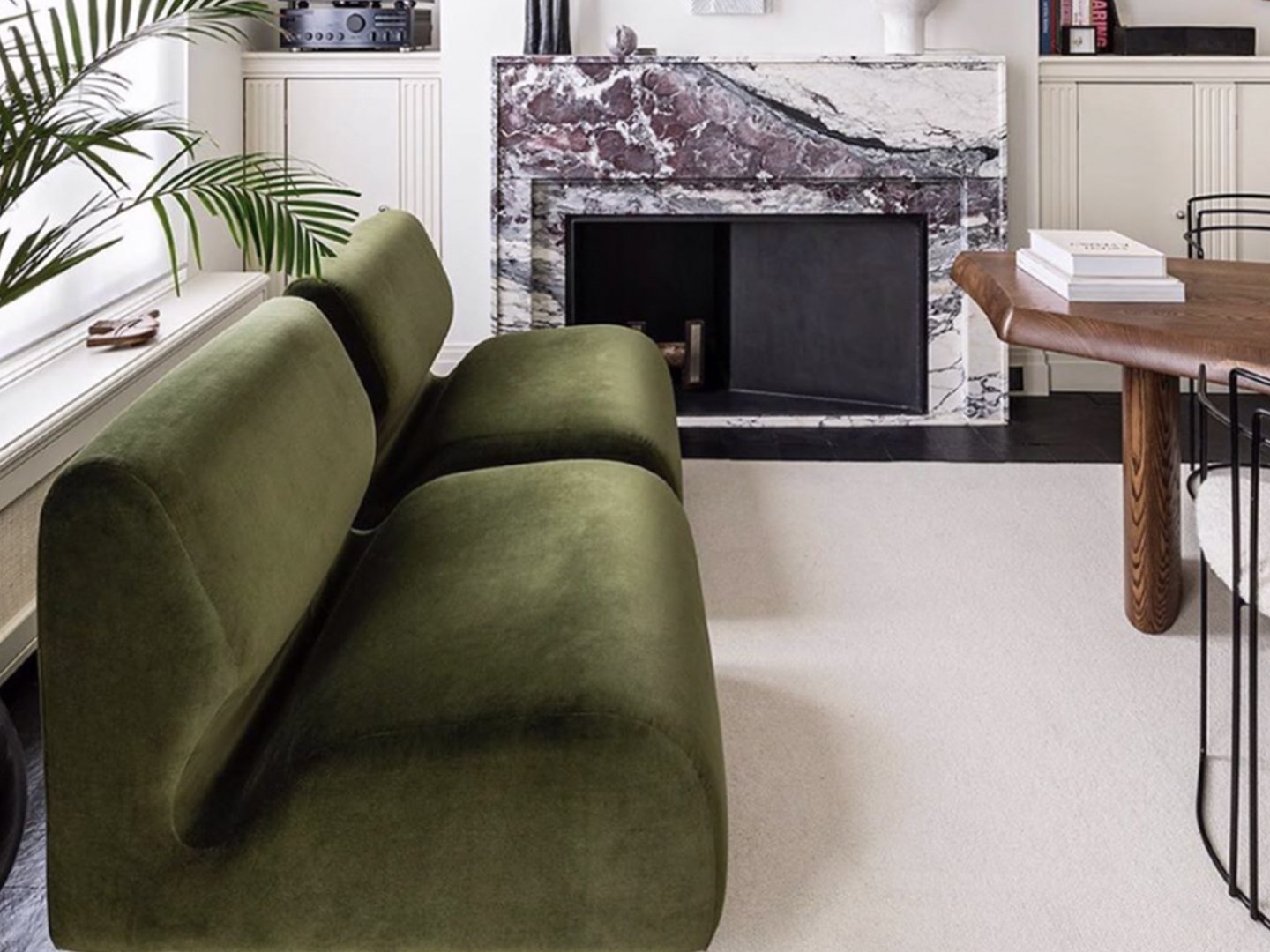
Cotton is a natural fiber derived from a shrub native to tropical and subtropical regions around the world. Organic cotton, 51 percent of which comes from India, is produced with strict adherence to environmentally sound practices. It distinguishes itself from conventional cotton by the absence of toxic pesticides and synthetic fertilizers in its cultivation.
While cotton may be one of the most common textile fibers on earth, according to the Textile Exchange Organic Cotton Market Report, organic cotton constitutes only one percent of the global cotton harvest.
Because organic cotton is processed without harsh chemical bleaches, dyes and other Volatile Organic Compounds (VOCs), it contributes to a healthier indoor environment. Due to its hypoallergenic nature and the absence of chemicals in production and finishing, organic fabrics are also less likely to trigger allergies or skin sensitivities.
Cotton, dubbed the ‘thirsty crop’ for its high water demand, is often cultivated in areas prone to water scarcity, posing significant water management issues. The average water footprint of seed cotton is equivalent to nearly 1.5 Olympic swimming pools per ton.
Comparatively, a lifecycle analysis by the Textile Exchange found that organic cotton cultivation required 91 percent less water and a 62 percent reduction in energy needs for production. More importantly, it doesn’t use the extensive insecticides and pesticides that its conventional version does, which can pollute local water sources, harm wildlife and degrade ecosystems.
While organic yields can be lower, this method of cultivation results in a less impactful crop, especially if regenerative farming practices are also in place.
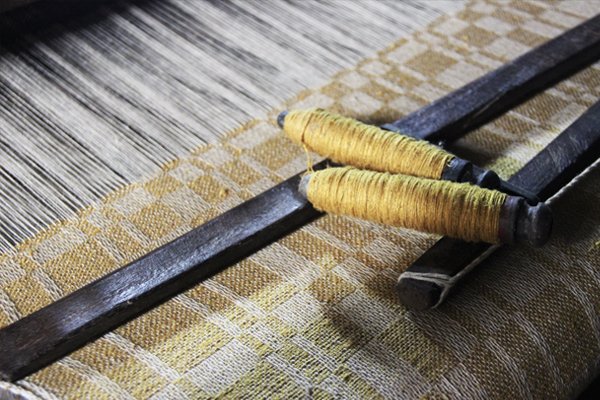

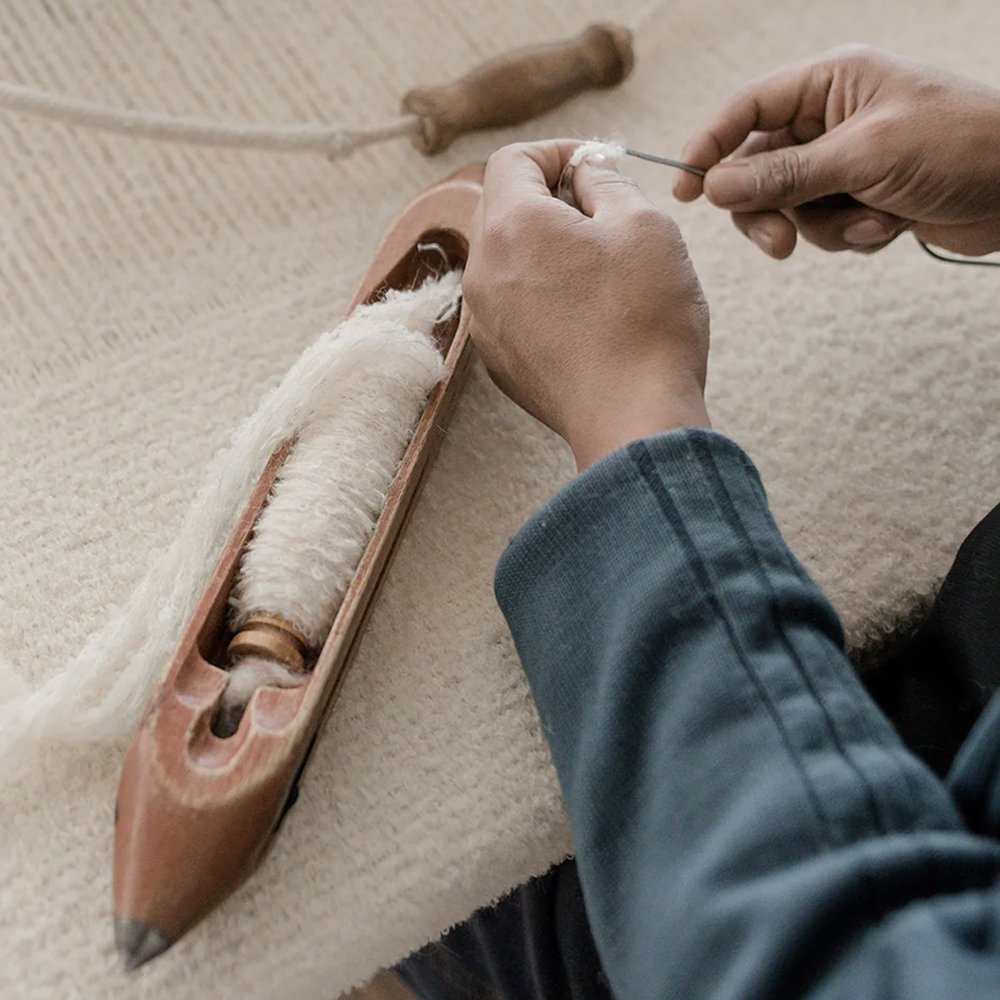
Stain resistant and water repellent: This terminology means that the product might be imbued with various chemicals, commonly known as perfluorinated compounds (PFCs) or per- and polyfluoroalkyl substances (PFAS) which are chemicals linked to cancers, birth defects and thyroid dysfunction.
Fire retardant: Many flame retardants are persistent organic pollutants (POPs), meaning they do not easily break down in the environment. Research has also linked them to health issues such as an increased risk of cancer.
Antimicrobials: Some antimicrobial chemicals, such as triclosan, have been linked to various health risks such as allergies, skin irritations and hormone disruption.
Wrinkle-free: Often involves a chemical process that uses formaldehyde, classified as a carcinogen by the National Cancer Institute.
Photography: de Le Cuona, Rose Uniacke, Rosemary Hallgarten, Chris Everard, Holland & Sherry, Romain Ricard, Kufri

4 min read
WLLW investigates four healthy and environmentally friendly bed linen options for a better night's sleep.
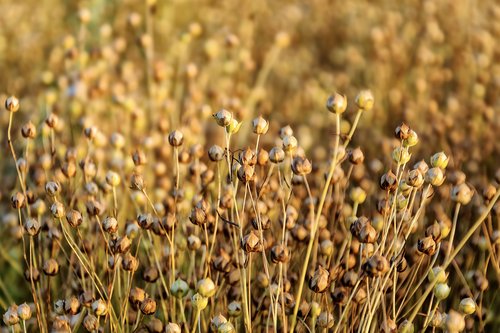
2 min read
WLLW explores the Global Organic Textile Standard as a hallmark of environmental and social responsibility in textile production.